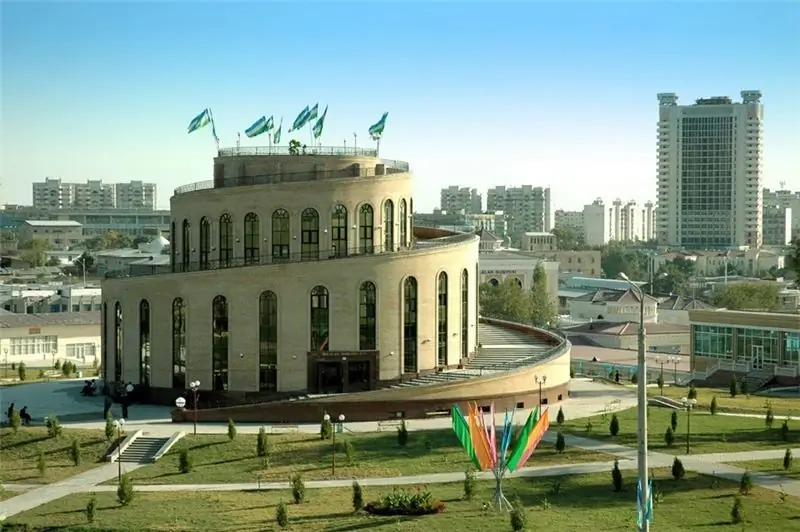
- Which of the symbols to visit in Tashkent
- Walking the streets and squares
- Famous houses of Tashkent
- Temples of Tashkent
Experienced travelers assure that if you want to get acquainted with the real East, then it is better to bypass the capital of Uzbekistan. Almost all important monuments of ancient history were destroyed as a result of the earthquake that occurred in 1966. Therefore, the answer to the question of what to visit in Tashkent from the historical sights today will be much shorter than the same answer sounded in the middle of the twentieth century.
Despite natural disasters, residents of Tashkent tried to restore the lost historical monuments. There are many beautiful places of worship in the city, and not only belonging to Muslims. The guests note in the capital a tolerant attitude towards all religions and confessions, confirmation of this by the temples of different religions, which are perceived not only as objects of worship, but also as important cultural monuments.
Which of the symbols to visit in Tashkent
One of the main symbols of the city is the so-called Tashkent chimes. The beautiful structure appeared in 1947, and the countdown began in the literal sense of April. The initiative to create such an object was shown by an ordinary resident of Tashkent, before the war he worked as a watchmaker, fought. As the main trophy, he brought a clock mechanism from the German town of Allenstein, the tower clock was located on the building of the local Town Hall.
To create the chimes, a special competition for the best project was organized; the best artists of Tashkent took part in the decoration of the building. Quite recently, in the immediate vicinity of the Tashkent chimes, another, similar, appeared, now the question arises before tourists which of the clocks are older.
Walking the streets and squares
Urban development is what tour operators themselves recommend to visit in Tashkent. You can walk along the streets and squares, getting acquainted with the interesting architecture, without resorting to the services of professionals.
The journey begins from Amir Timur Square, this place is beautifully called by the townspeople the heart of the capital. It is decorated with buildings built in the 19th century, which now house the Timurid Museum, the Palace of the Forums, the university where future lawyers are taught.
Another interesting area for guests is Khast-Imam, the name speaks of its high mission. This place is considered the religious Muslim center not only of Tashkent, but of the whole country. The main mosques and educational centers - madrasahs - are located around the square; some of the buildings have survived from the 16th century.
If you continue your acquaintance with the religious buildings of Muslims, then you need to go to the mosque, which has a complex name - Khoja Akhrar Vali. Year of construction - 819, naturally, over the centuries, the religious building was rebuilt, changing names. But even today the mosque is an amazing sight. The impressive thickness of the walls of this structure, located at the crossroads, at the meeting place of the ancient Tashkent squares, amazes.
Famous houses of Tashkent
Among the architectural highlights of the city is a building built at the end of the 19th century, at the intersection of Ikanskaya Street (now Y. Akhunbabaev Street) and Vorontsovsky Avenue (Suleimanova Street). It belonged to Elena Bukovskaya, daughter of General Kurovitsky, after the revolution there was a branch of the "Red Cross", then the Ministry of Foreign Affairs of Uzbekistan.
Another interesting Tashkent house is the former palace of Nikolai Konstantinovich, the Grand Duke. The complex was built in 1889-1891, of course, after the revolution it was nationalized, it also changed its owners many times, hiring now museum workers, then pioneer activists, then again museum employees.
The same story happened with the building of the former pharmacy, its first owner was a certain Krause, after his death - Kaplan. Behind the house, the name of Kaplan's pharmacy was preserved, although after the revolution Marxism-Leninism was taught there instead of selling drugs, and now there is a bank here. But the buildings of educational institutions in pre-revolutionary Tashkent (male and female gymnasiums, the Real School) and after 1917 served those who "gnawed the granite of science."
Temples of Tashkent
The city is an example of tolerance towards people of non-Muslim faith. You can start your acquaintance with the religious buildings of the "infidels" from the Cathedral of the Assumption of the Mother of God. It is located not far from the station and continues to faithfully serve the faithful.
Fans of the Lutheran faith can go to the Evangelical Lutheran Church, where services have been held since 1899. The sponsor or patron of the building was the aforementioned Krause, the architectural project was prepared by L. Benois. In the Soviet years, the building was transferred to civil services; in the 1990s, Lutheran services began to be sent there again. Not far from this temple there is a Roman Catholic church (popularly called Polish).






